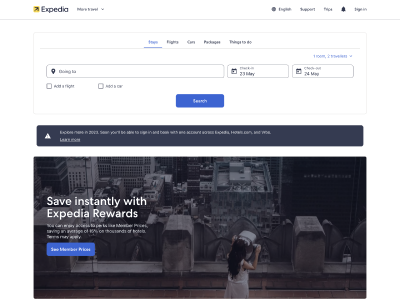At New Years, we often reflect on the failures of last year and vow to do better, work better and be better.
Beat the rest of the competition who are stepping into the world of SEO for the first time with In Marketing We Trust’s top 5 mistakes people made in 2013, and how to avoid making them in 2014
1) Unlocking your website to the world
It is no secret that Google dominates the Search Engine industry. By keeping your website closed to Google bots, you are essentially hiding from Google and do not want to be found!
Create a Robots.txt file which is able to be crawled by bots. Submit a request to Google to have your webpage found.
Next, start creating your social profile through a number of social media accounts. Try to have one major social media account on one of the big social platforms. Use the smaller social media platforms to link to your major one.
For example, if you work in a niche market where Pinterest would be successful, have Facebook or Twitter as your primary information provider and link back to it via Pinterest. Ensure each social media channel is populated with correct, relevant information and not spammed. It is important to keep track of what people are saying in each channel you create, otherwise you may miss out on some major opportunities.
Finally, get people talking about your website/company/product via those social channels. The more popular you are, the faster you will find yourself climbing the search results and increasing your organic traffic.
2) Content is King!
All of 2013 in SEO could be summarised in one word. Content. This was the buzz word to hit the digital marketing arena in 2013. Everyone wanted to create as much fresh content as possible.
The dream of landing that perfect piece of content lead to a landfill in which content was created for the sake of generating leads which in turn, just created spam.
While the impact content has is slowly declining, it is still a very important aspect of SEO. Without great, relevant content, you rely only on your product to attract people. By having great content, you can reach out to a wider audience who may not have found you otherwise.
3) Duplicate Content
Having duplicate content on your website is a very common issue when a website is looking for their SEO issue(s). Although Google’s Panda update started in 2011, people still suffer from its penalties. The two major areas of concern for Panda penalties are subdomains and the structure of their website.
Typically the issue with subdomains are caused by people not realising that what they are doing is duplicating their own content on the subdomain. While they know duplicate content is bad, what they fail to understand is what is considered duplicate content. Even though you may not be trying to rank for your subdomains, they will influence the rank your
One fix to the issue is to set a rel=canonical url to your root domain and add “noindex” to the subdomain pages. While your subdomains will not rank, you will save yourself from penalties either current, or in the future.
When the Panda problem comes from bad structuring of the website, it is often a simple fix. Typically, we see the footer not properly identified, so Robots read your website to have the same content on every page. By adding this information into your footer, you can save yourself from panda penalties.
4) Broken Links
Broken links are not uncommon in the world of digital marketing. The most common reason for a link to become broken is that the website it links to do not exist anymore.
By having broken links on your website, you will hurt your page rankings. For this reason, it is recommended to regularly check for errors to your links. If any are found, they should be removed as soon as possible.
If the link is on your own page, you have a few options. Firstly, a 301 redirect will direct traffic, to another page so visitors and robots will not see an error. Secondly, you can 404 redirect a page sending on the visitors to that page, but the robots will still see the old link content.
Rand Fishkin wrote a blog article on when and when to not use 404 redirects in which he goes in-depth on his thought process behind the use of them.
5) Title Tags and Meta Descriptions
Creating unique, interesting and informative Title Tags are one of the most important parts of not only SEO, but also for the user experience on your website. By having duplicated title tags, you are not only going to hurt your page rank, but also turn away people landing on your page.
While title tags and meta descriptions do not directly influence ranking, they assist SEO by being displayed in Google searches. Providing accurate and interesting title tags and meta descriptions will attract users, particularly if you include a call to action at the end of the meta description. If a section of your title tag or meta description is contained within the search performed by the user, it will appear in bold.
Take these 5 mistakes from the in-house marketers of the past and learn from them. I recommend you use the resources provided as a strong starting point if you have any issues. For further inquiries, please contact In Marketing We Trust directly for a consultation
8 min read
Categories
Recommended for you
21 October, 2025 by Selina Gough

Google Ads in AI Overviews: How AIO Affects Your Ads
Wondering how AIO affects your ads? If you’re running Google Ads in…
21 May, 2025 by Paul Hewett

Google IO 2025 Implications for Marketers
Google I/O 2025: AI Rewrites the Search Playbook – What Marketers Need…
17 April, 2025 by Paul Hewett

Agentic AI in Marketing: Real Examples & Best Practices
Agentic AI in marketing is the future. But it’s also the now.…
8 April, 2025 by Paul Hewett

Search 2.0: How AI is Reshaping Discovery and What It Means for Your Brand
Search marketing is undergoing a structural shift. Not a tactical change. Not…
6 February, 2025 by Kirsten Tanner

Growth of the travel industry: 2025 and beyond
The growth of the travel industry is nothing short of extraordinary. From…
14 January, 2025 by Marius Sprong

Our Expert SEO Advice to Ye for Yeezy.com
Last week Ye (AKA Kanye West) posted on Instagram to his over…
19 November, 2024 by Kirsten Tanner

Travel Marketing Summit Wrap-Up: Key Trends and Insights Shaping the Future of Travel
Mumbrella’s Travel Marketing Summit brought together industry leaders, innovators and strategists to…
18 November, 2024 by Kirsten Tanner

The Future of Search in Travel Insights: Mumbrella Travel Marketing Summit Panel with Google & TikTok
During November (2024) we sponsored Mumbrella’s Travel Marketing Summit and hosted a…
26 September, 2024 by Kirsten Tanner

Social Media Marketing for Travel: Engaging Audiences and Inspiring Journeys
Social media marketing has become an indispensable tool for businesses, especially in…


